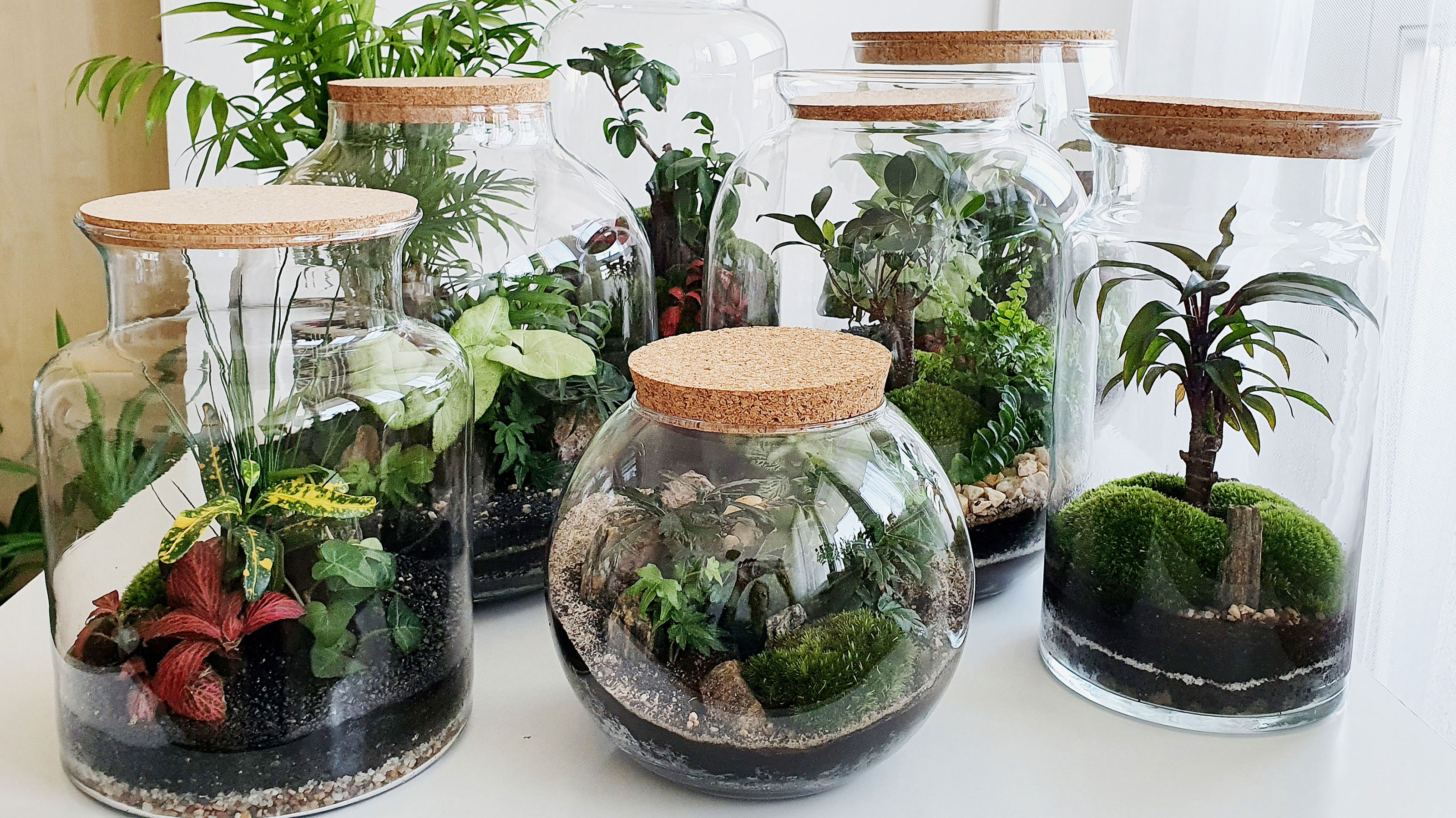
If you're looking for inspiration for the best plants for terrariums the key thing to remember is to choose according to the style of container you've opted for. Make a strong design statement by pairing the shape and style of your terrarium with the most suitable plants to enhance it.
The main types of terrariums to choose from are open, closed, or hanging designs, and each one requires different plants. You also need to think about how the foliage will fill the terrarium without making it feel overcrowded.
Terrariums work by creating a micro-climate and using two or three different plants will help to create a mini-landscape. Whatever plants you choose for your terrarium ideas, you can be sure this is one trend for displaying indoor plants that are not going away any time soon.
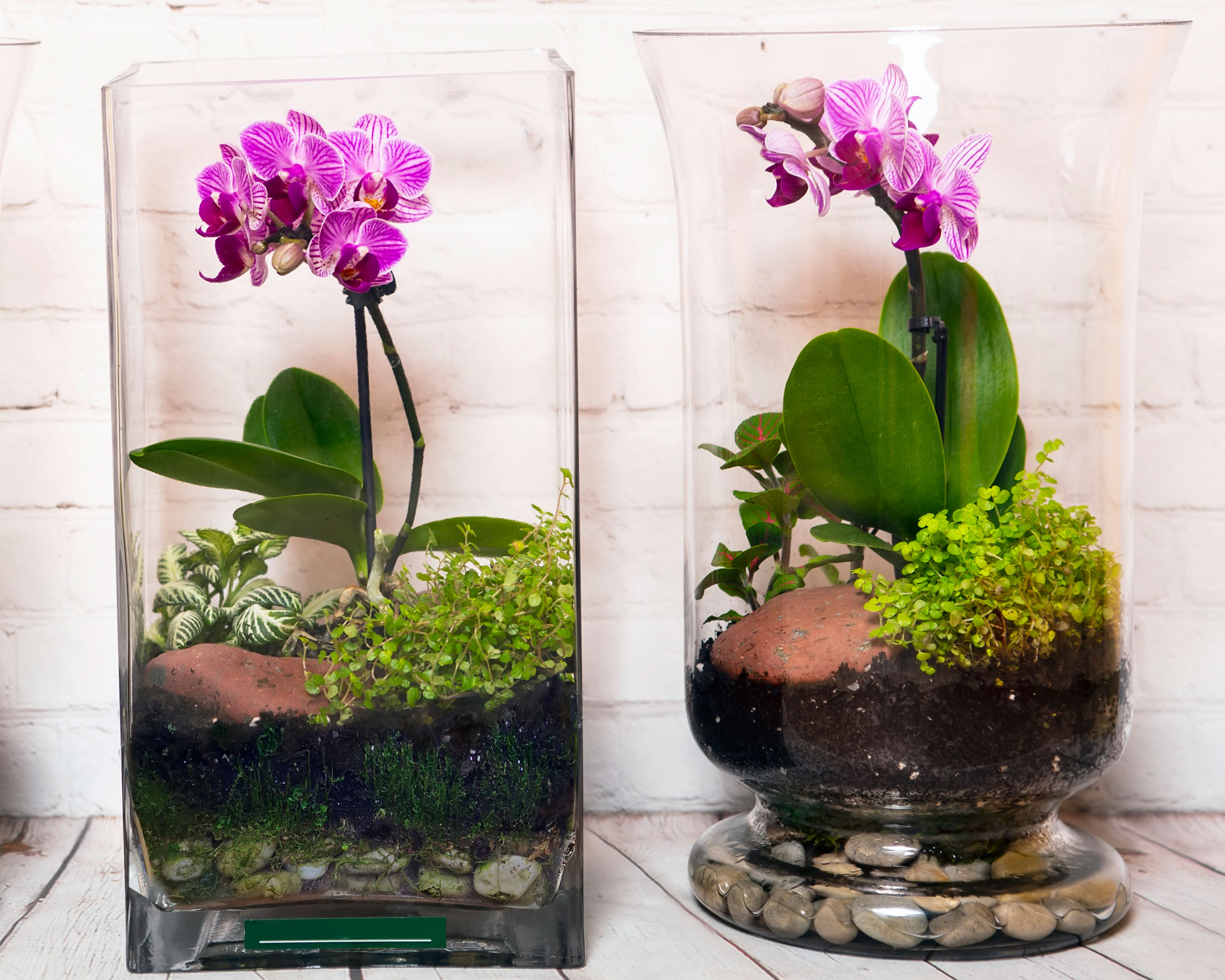
7 of the best plants for terrariums
"Before choosing the best plants for terrariums, there are one or two things to take into consideration," says Mr Houseplant Vladan Nikolic. "Small plants (shorter than 6 inches) are preferable because you can fit them into the terrarium easily. You can grow larger plants, but you will have to prune them to contain their growth."
It's also a good idea to group plants together in your terrarium with similar care requirements in terms of humidity, water, and temperature needs. This increases your chances of success and makes maintenance easier.
"Consider also how much light your plants need," says Vladan. "If you can’t offer them a lot of bright, indirect light, opt instead for low-light tolerant plants, or supplement the light with a grow light."
Now find out more with our expert pick of the best indoor plants for terrariums.
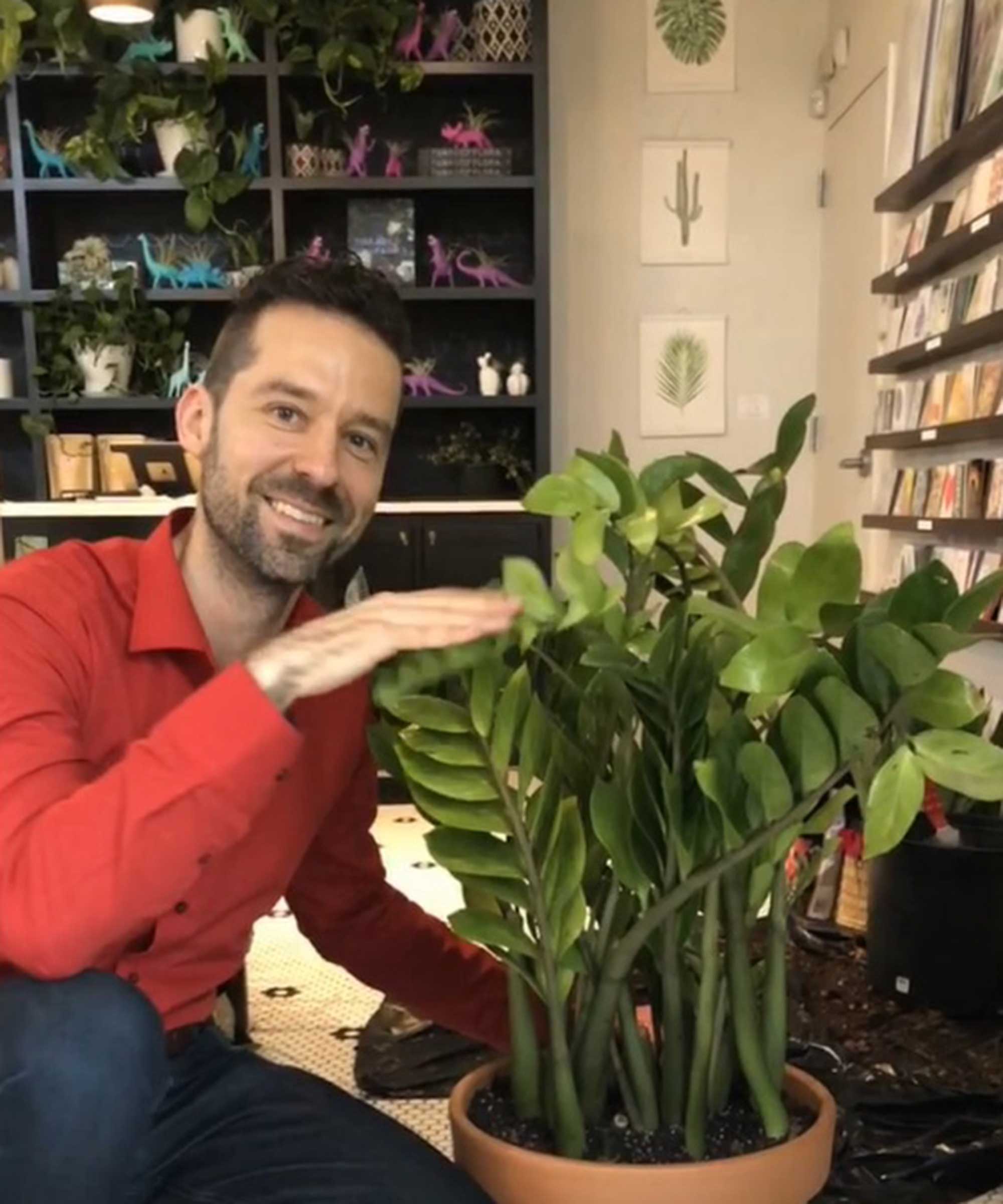
Vladan Nikolic is a houseplant expert with over 10 years' experience, the founder of the houseplant care blog mrhouseplant.com, and an influencer who helps newcomers in the houseplant world become great plant parents.
1. Watermelon peperomia
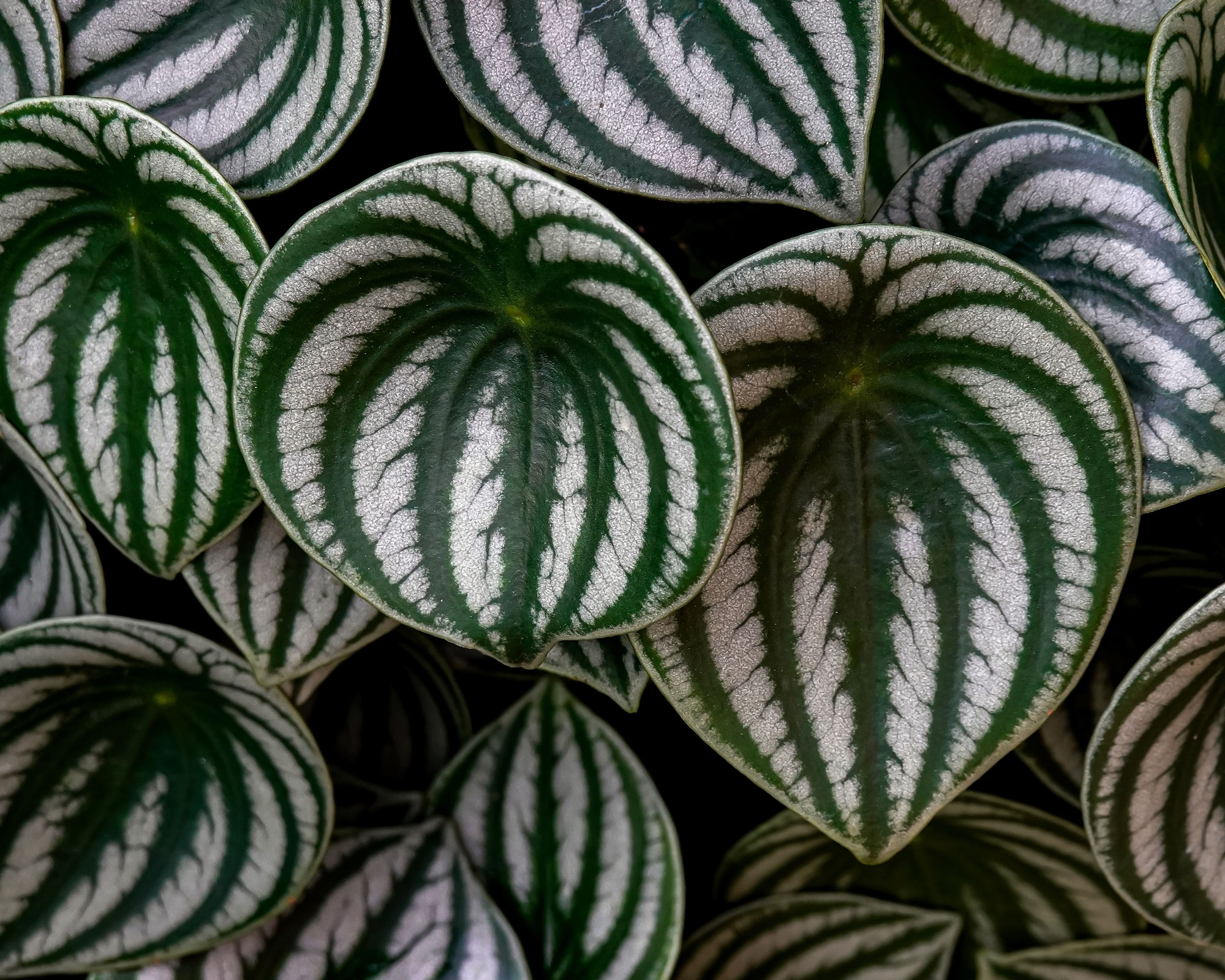
Peperomia is a great choice if you're just getting started with terrariums as it's so easy to care for. It works well as a terrarium centerpiece because of its eye-catching foliage (it's easy to see how it gets its name) and the fact it stays compact.
"Watermelon peperomia makes a great addition to a terrarium with its silver-striped leaves," says Vladan Nikolic. "It grows best in medium to bright indirect light. Peperomia is a good choice for a terrarium because it loves high humidity and stays relatively small."
As watermelon peperomia loves moist conditions it's also a great choice for a closed terrarium like these glass terrarium jars with wood lids from Walmart, and the easy access opening makes styling a breeze.
2. Polka dot plant
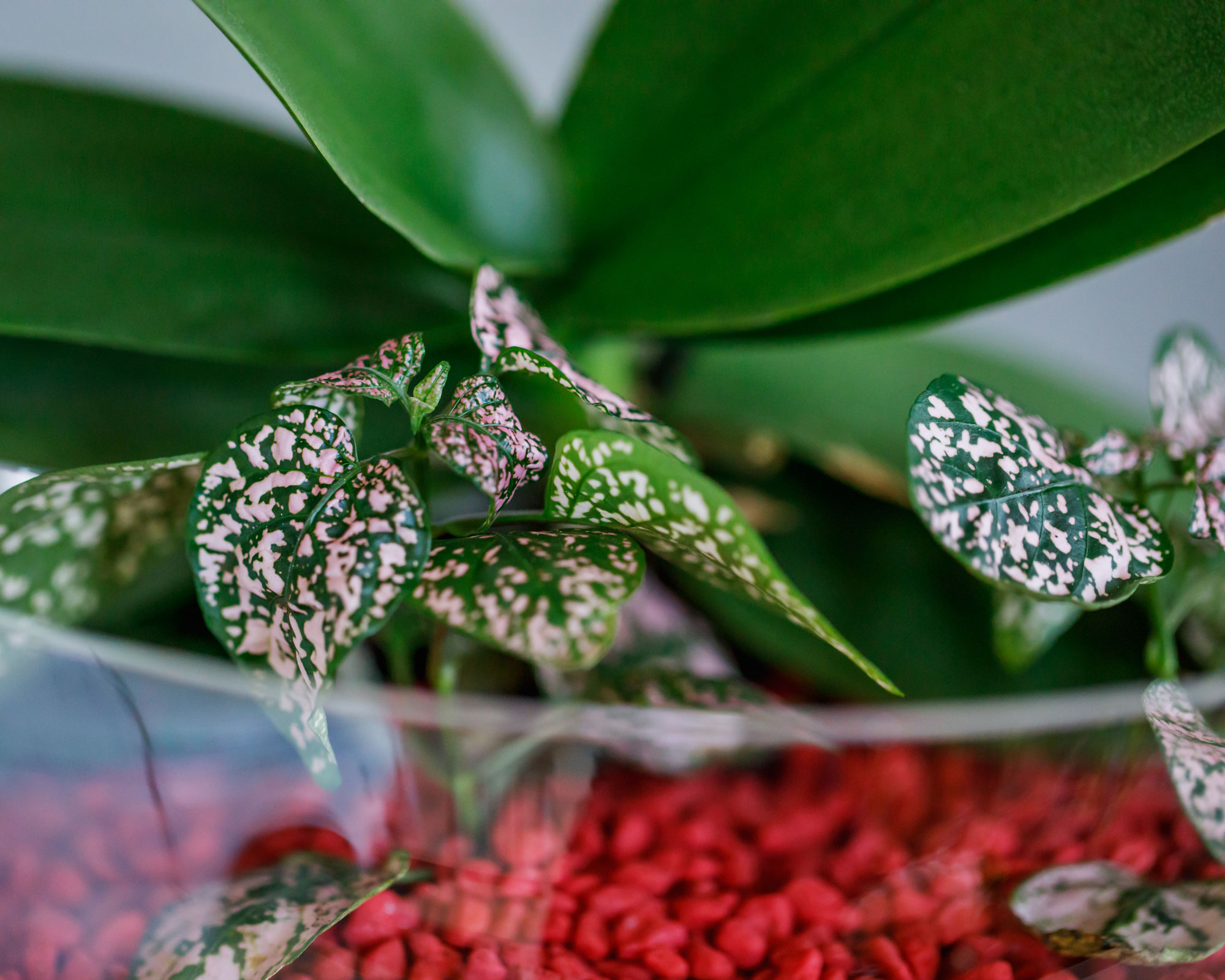
Another easy-care choice for beginners is the polka dot plant, with its pretty patterned leaves featuring pink, red, or cream spots, and occasional pink flowers. Its showy good looks definitely make it a statement piece for any terrarium. One thing to look out for is the markings resemble splashes rather than the dots suggested by the name.
These petite plants stay compact but to keep that vivid color coming just remember the terrarium needs the right light. A position in bright indirect light is best for polka dot plants to make sure their leaves develop that gorgeous bright color.
Another big plus point that makes this one of the best plants for terrariums is that it works in both open and closed terrarium styles, as well as being a great choice for low-maintenance indoor plants for living rooms if you're looking for color.
3. Mini ferns
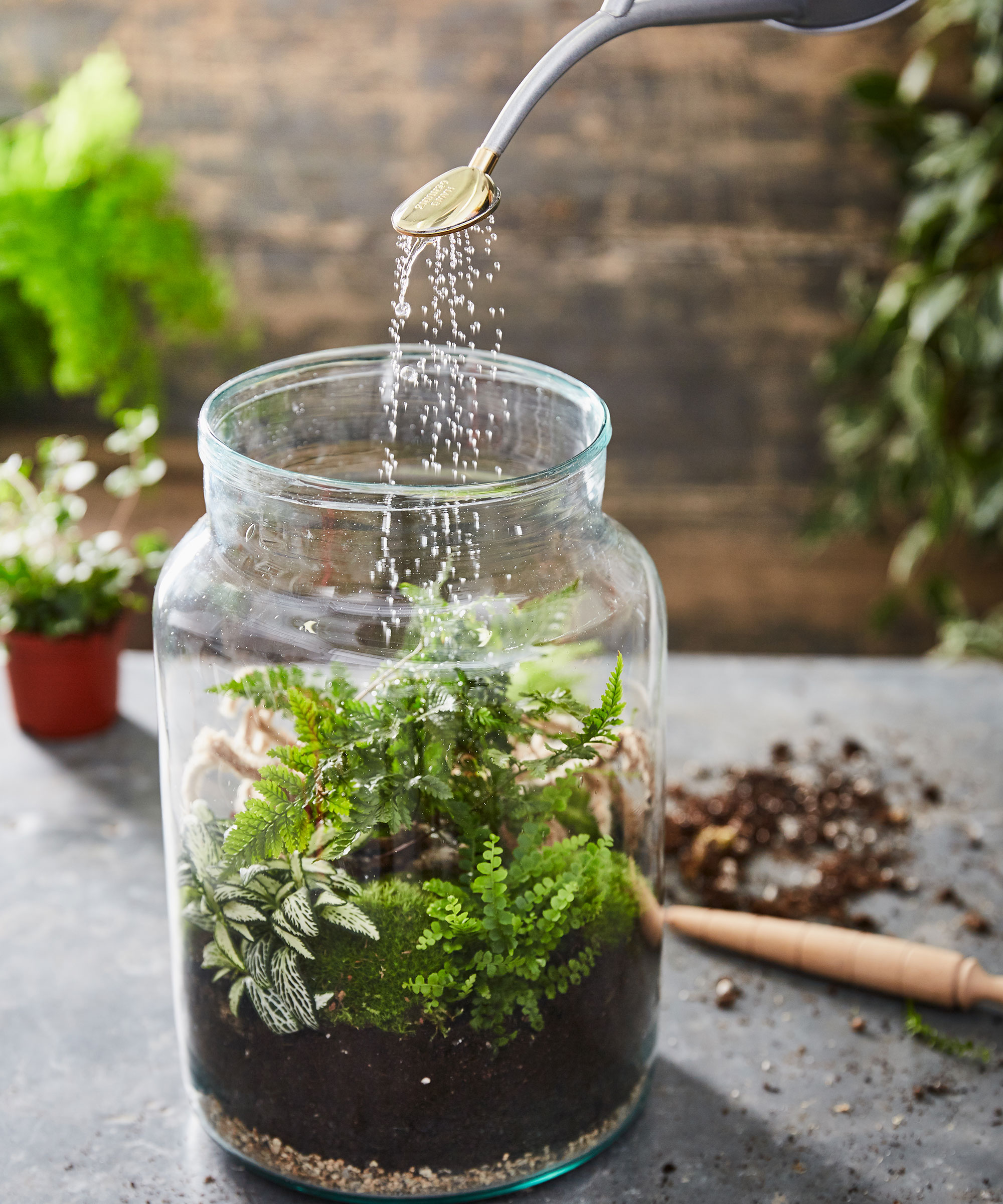
Small fern plants were born to live in terrariums. They're easy to care for, love moist and humid conditions, and can tolerate low light levels. They will thrive in the enclosed environment of a terrarium, filling out the space with that decorative ferny foliage detail that looks so good. In terms of the best plants for terrariums they should be right at the top of your list.
"Fern varieties like the 'Fluffy Ruffles' fern like this one from Plantvine and the 'Lemon Button' fern are perfect for terrariums," says Dan Jones of Terrarium Tribe. "They love humidity, stay small, and can even be divided to create yet smaller plants. For a beginner-friendly terrarium, give bad boys like maidenhair fern a miss. I know they’re gorgeous, but keeping them happy is a nightmare."

Dan Jones (together with co-founder Rae Davidson) set up Terrarium Tribe as the leading online source for all things to do with plant terrariums. With a professional background in science, marketing, and teaching, Dan has cultivated this platform to help beginners and experts alike improve their terrarium skills.
4. Air plants
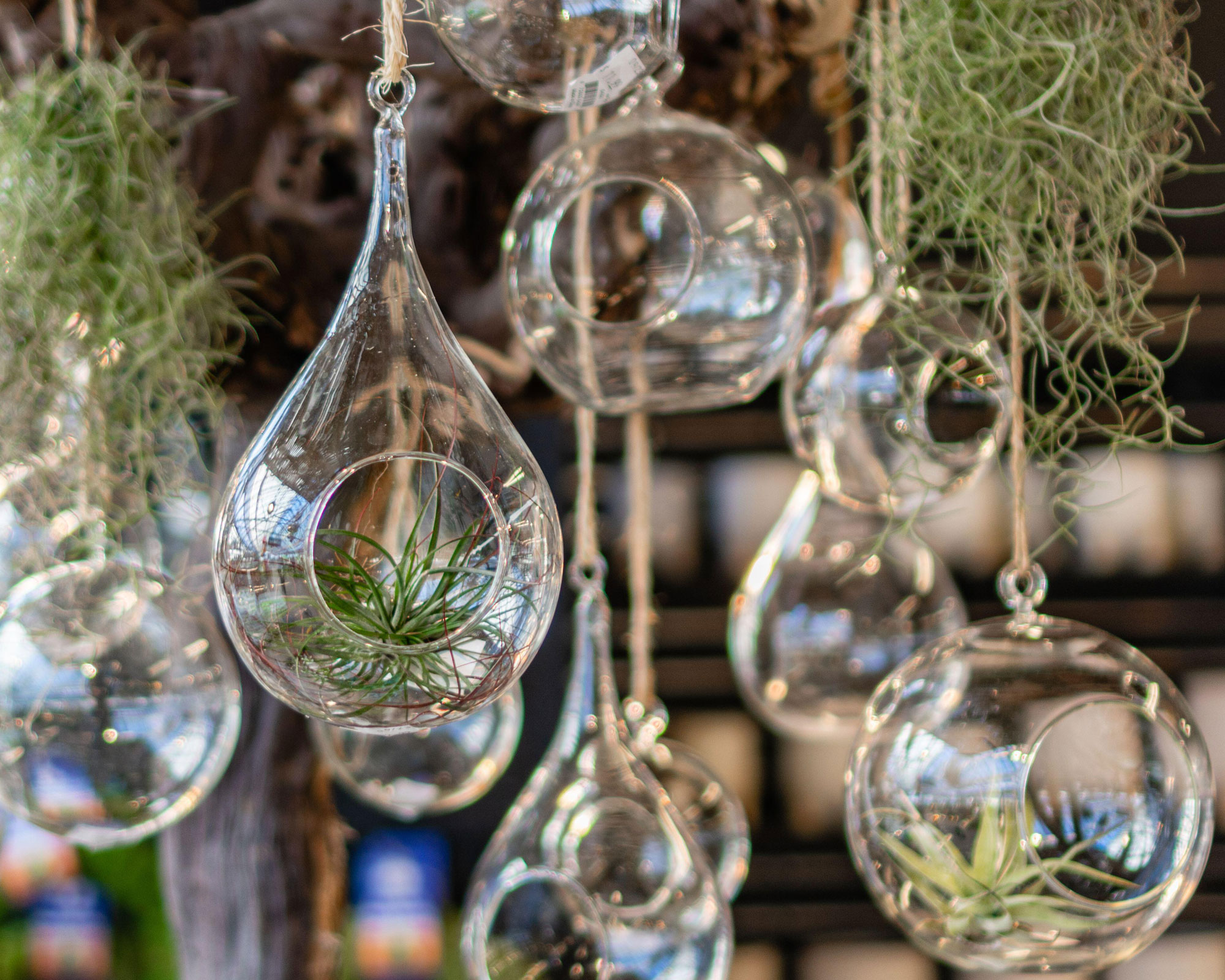
These tiny treasures will add an exotic touch to terrariums, where they will thrive as long as they get plenty of indirect sunlight, air circulation, and water. First find out how to care for an air plant before planting up a terrarium with them to make sure you get the best results.
Also known as Tillandsia, there are lots of varieties to choose from, and they are one of the best plants for terrariums, especially as they look great in hanging glass globe terrariums like these air plant holders from Walmart.
Air plants require temperatures between 60-75°F and moderate humidity levels, making them ideal for growing in terrariums especially as they thrive under glass but make sure they get plenty of air circulation. They don't need soil, so instead cover the bottom of the terrarium with sand or aquarium gravel. Then all you have to do is simply arrange your plants.
5. Mosaic plant
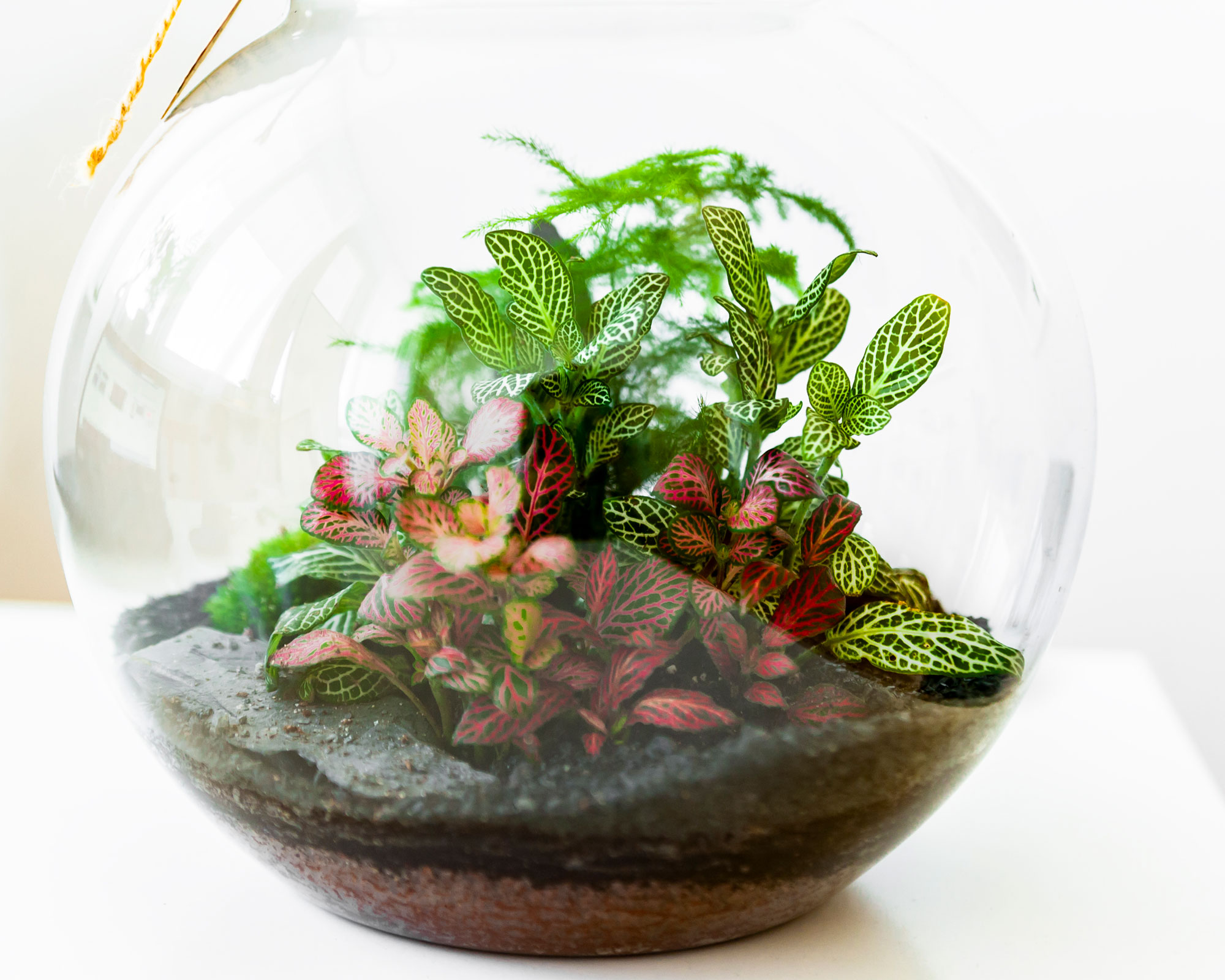
Adding a low-growing mosaic plant (also known as fittonia, nerve plant, and painted net leaf plant) to a terrarium is always a good idea. The beautiful foliage with its intricate patterns (where the name mosaic comes from) makes an eye-catching focal point and means they are one of the best plants for terrariums.
"Bold and bright, ornamental-looking foliage is the hallmark of fittonia plants," says Dan Jones. "Their characteristic striking venation always comes through strong." They like indirect light and high humidity and require only moderate watering so that the compost is kept just moist.
These mini green and white nerve plants from Walmart are ideal for planting up in a terrarium as they're exactly the right size.
6. Succulents and cacti
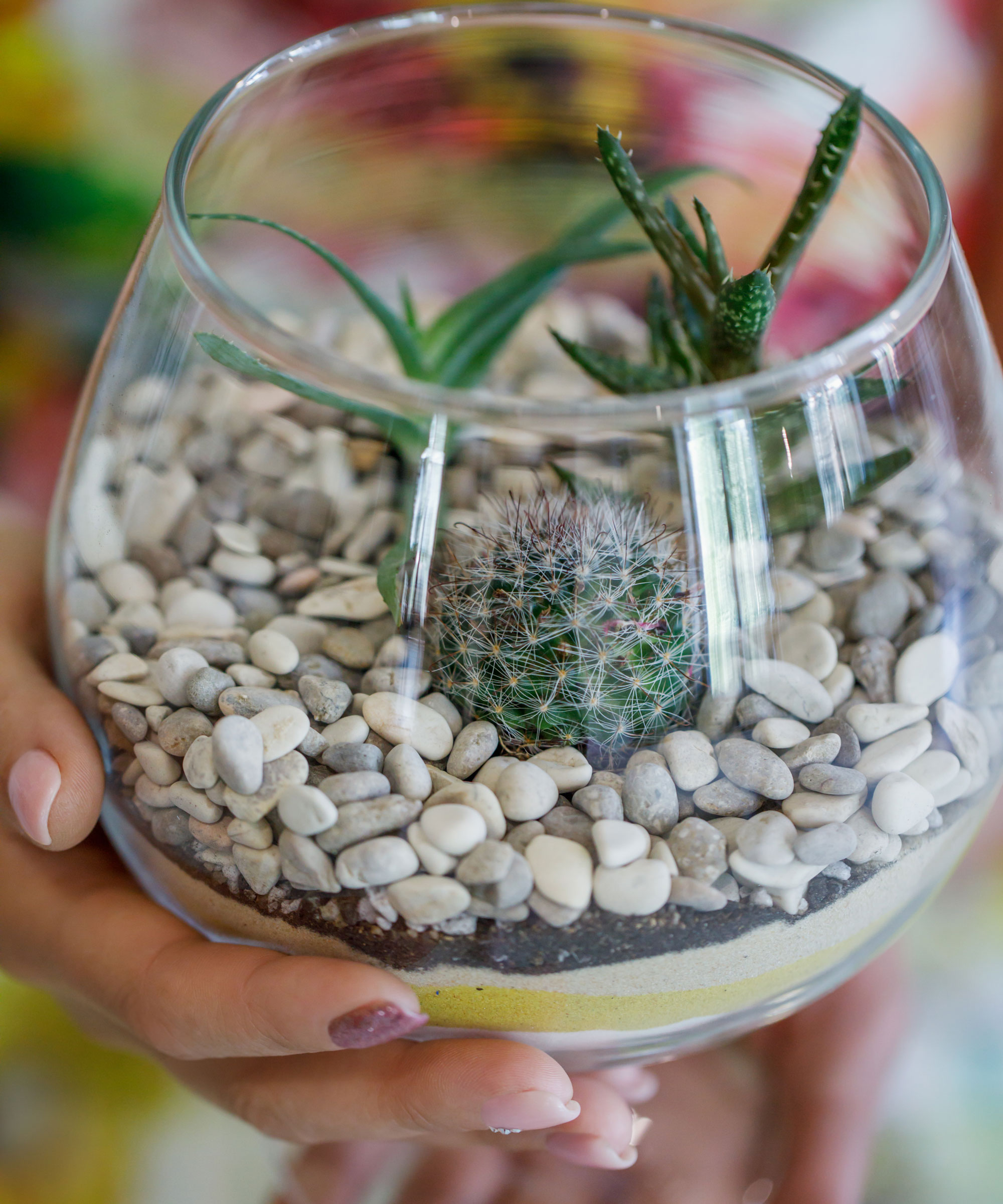
Succulents and cacti are suited to dry terrariums, and will thrive if you create desert-like conditions for them. The humid atmosphere in a closed terrarium would kill them so instead they like a semi-enclosed bowl style space, being watered very occasionally, and a spot in indirect light as harsh sunlight would dry them out.
Choose succulents and cacti that grow at a similar rate and like the same conditions. Dan Jones suggests trying Haworthia, Echeveria, and Sedum burrito for a good mix of succulents. For cacti, he suggests choosing small varieties like thimble cactus, cinnamon cactus, and rainbow pincushion cactus.
Alternatively, you can buy a pre-planted succulent terrarium like this one from plant.com and find how how to care for succulents to get your plants off to the best start.
7. Orchids
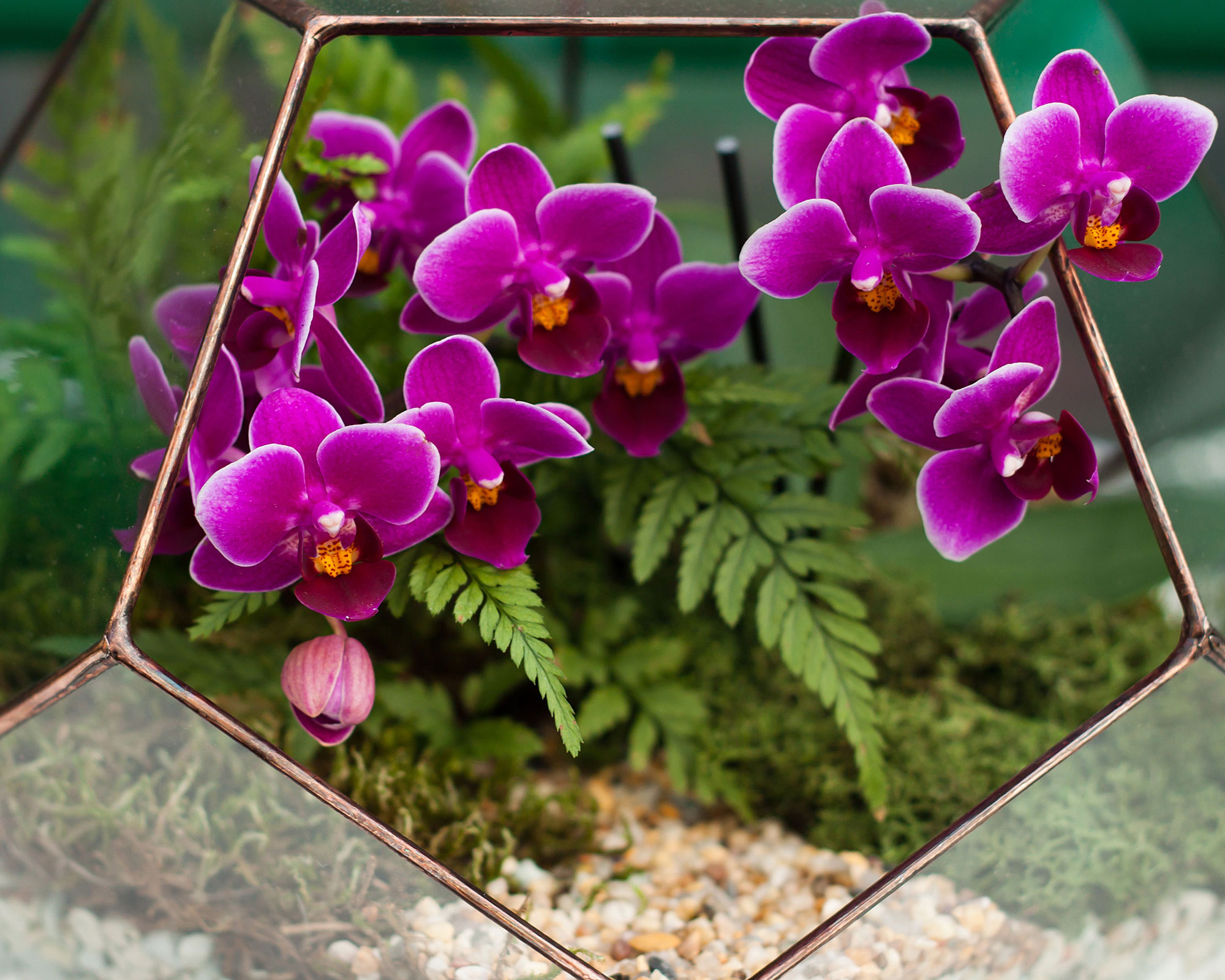
Orchids are one of the best plants for terrariums as they thrive in the small, enclosed environment, which works rather like a mini greenhouse. So if you've struggled to grow these beauties in the past, an orchid terrarium could be the answer.
Choose orchid varieties that like high humidity, intermediate temperature, and low-light conditions. You also need to decide which variety of orchids is best if you're going for a closed or open terrarium and take into account how big it will grow.
"Some of the best miniature orchids for terrariums include the popular Phalaenopsis variety (also known as the moth orchid), as well as the Angraecum and Lepanthes," says Anna Weston, founder of Orchid Bliss. "They will not grow more than the size of your palm, and they love high-humidity environments, making them excellent plants for closed terrariums."
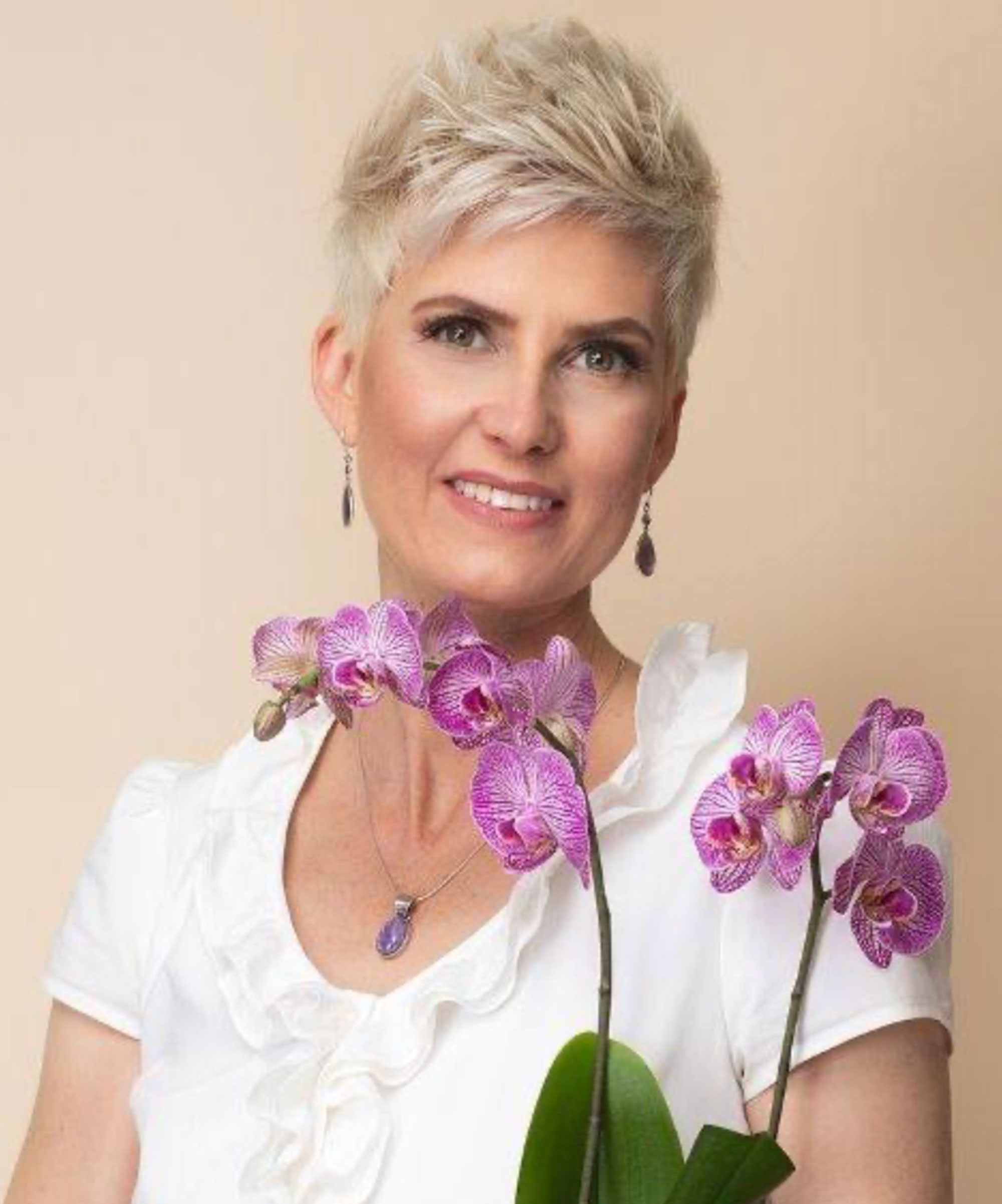
Anna Weston is an orchid expert, and founder of Orchid Bliss, an online teaching resource for all things orchid care.
What to shop
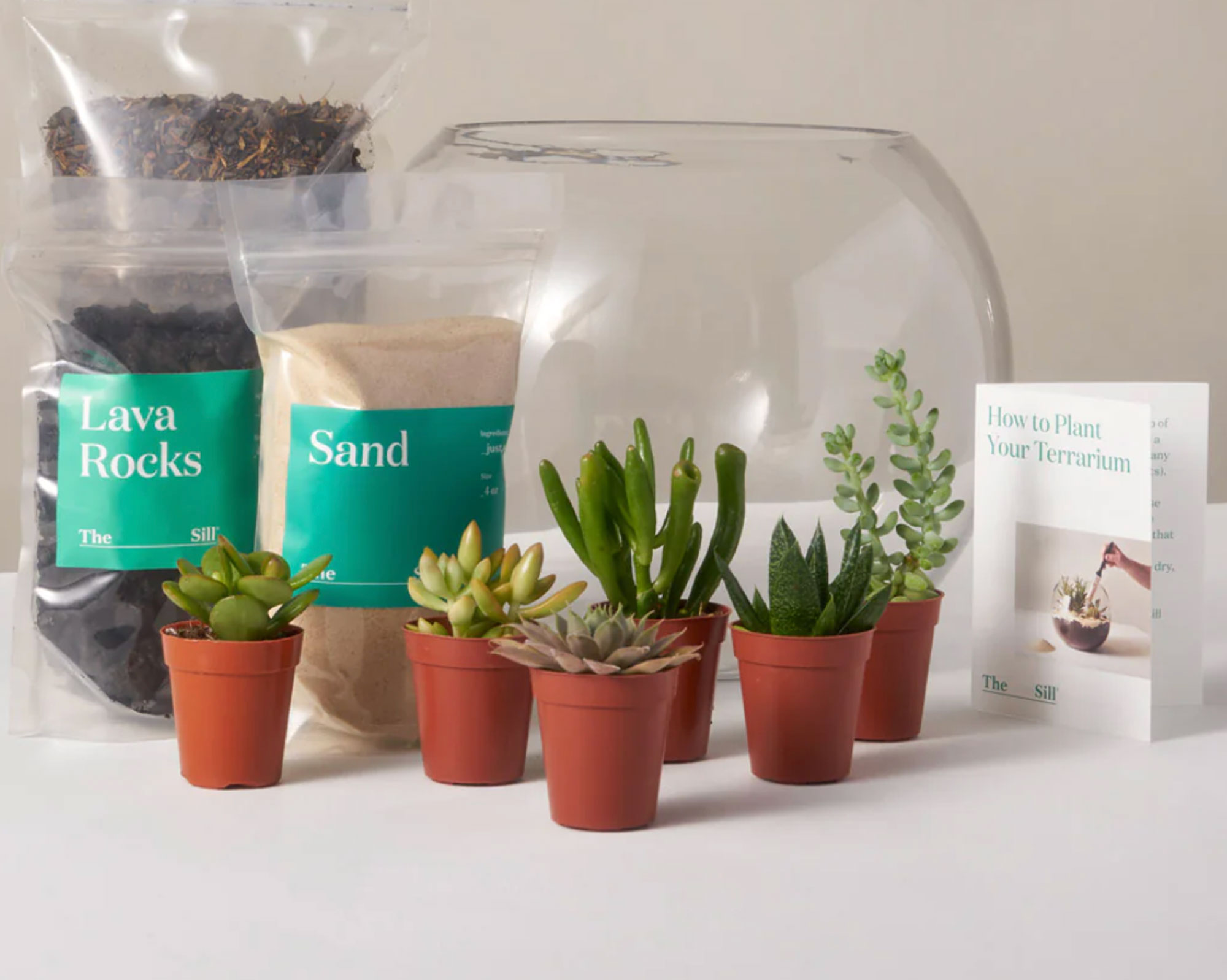
This DIY terrarium kit includes everything you need to create a miniature desertscape. You choose the succulents or cacti, and it also comes with bags of cacti mix, lava rocks and sand, as well as a stylish glass bowl.
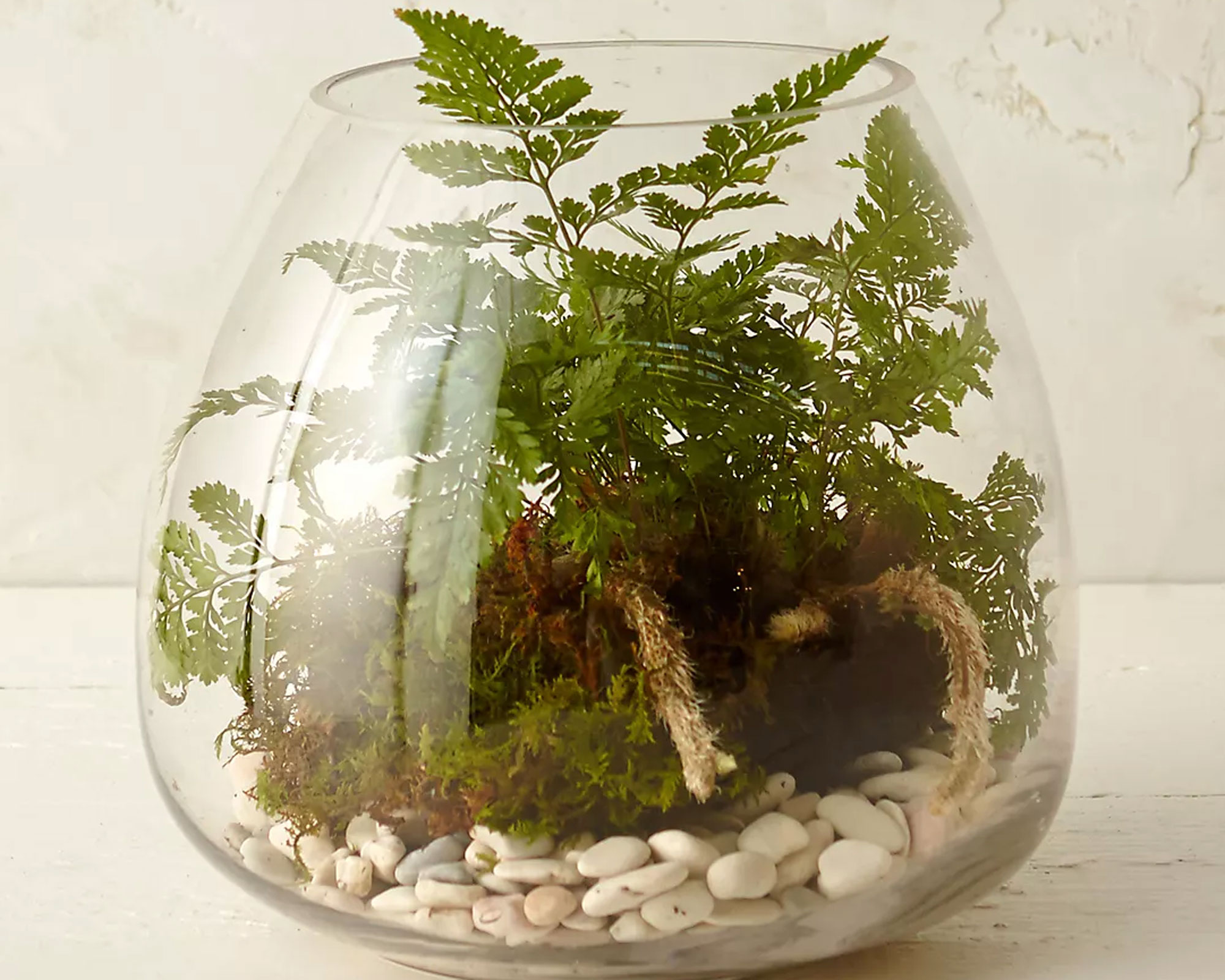
Sleek and simple, this flat-bottomed glass droplet terrarium will make a polished display on your shelves planted up with an abundance of ferns and other plants. It comes in both small (7 inches high) and large (10 inches high).
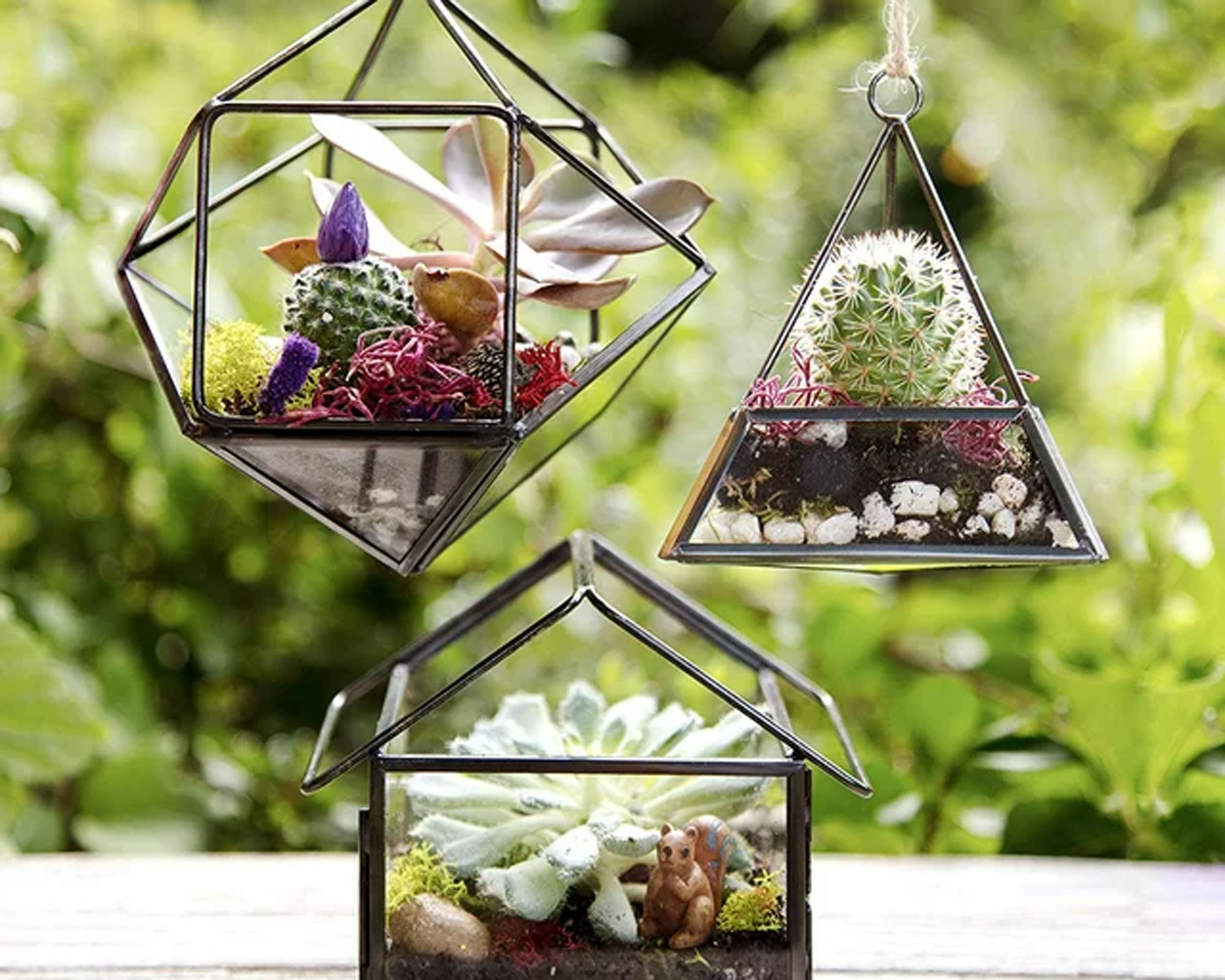
This set of hanging glass terrariums is perfect for growing mini plants, and includes mini triangle, prism and 'greenhouse' styles. The designs have ventilation, making them a good choice for succulents and air plants.
FAQs
What are the best plants for open terrariums?
"Open terrariums are popular, and for good reason," says Dan Jones. "They’re a great way for you to get started with a terrarium. You still get all the experience of planting and building a terrarium, but you don’t have to deal with some of the factors that can easily go wrong in a closed system."
Open terrariums offer better airflow for plants and there is a lower risk of mold or rot as there is no issue with the build-up of condensation.
Succulents, cacti, and air plants are some of the best choices for open terrariums. They have similar care requirements, so it’s easy to put them together in an interesting mix of textures and shapes.
"There’s no super strict science to open terrarium care either," says Dan. "Without the need to finely balance a tiny ecosystem, you’re essentially just trying to keep your plants fed and happy. It’s no different to looking after your houseplants."
What are the best plants for closed terrariums?
If you love the look of those mini jungles in apothecary jars packed with lush green tropical plants and mosses you see all over Insta then a closed terrarium is the one to choose.
"A sealed ecosystem like a closed terrarium looks beautiful but is also quite a balancing act," says Dan Jones. "Getting the right plants, materials, and container is the first step."
Closed terrarium containers come in all shapes and sizes, from large glass jars with lids to mini glasshouses with tops that can be opened or closed. Plants should be easy to care for varieties that love moist and humid conditions and can tolerate low light levels.
When choosing the best plants for a closed terrarium you'll need a good mix of different ones to get that lush mini-jungle look. They'll need to fit in the container when the lid is in place, and all have the same growing requirements. Some of the best plants for closed terrariums include small indoor ferns, mosaic plants, and polka dot plants.
We have plenty more ideas for indoor gardening including the best plants for an indoor garden and how to grow an indoor herb garden. So if you live in an apartment with no outdoor space you can still exercise your green thumb.
Join our newsletter
Get small space home decor ideas, celeb inspiration, DIY tips and more, straight to your inbox!
Lifestyle journalist Sarah Wilson writes about flowers, plants, garden design and trends. She has studied introductory garden and landscape design and floristry, and also has an RHS Level 2 qualification in the Principles of Plant Growth and Development. In addition to homesandgardens.com and livingetc.com she's written for gardeningetc.com, Real Homes, Modern Gardens and Country Homes & Interiors magazines. Her first job was at Elle magazine, during which time a trip to the beautiful La Colombe d'Or in St-Paul-de-Vence led to an interest in writing about all things botanical. Later as lifestyle editor at Country Homes & Interiors magazine the real pull was the run of captivating country gardens that were featured.